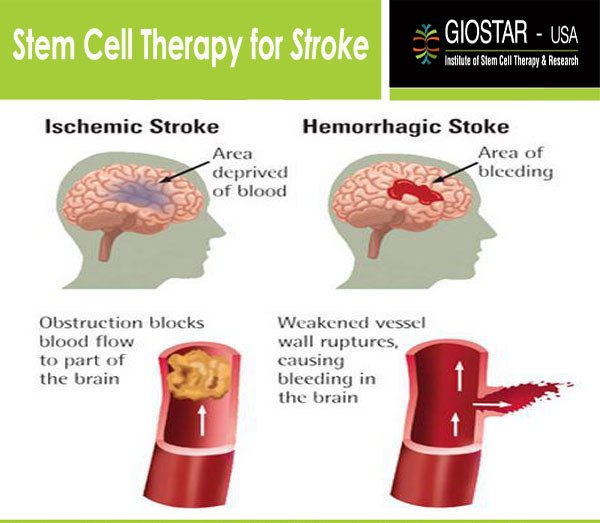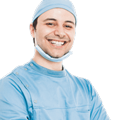What is Stroke?
Similar to heart attack, the Stroke is known as the brain attack due to blockages in the blood vessels supplying blood to the brain. This is a major illness, needing extra precaution. It can happen to anyone at any point of time. The degree of damage depends upon the area and the extent of damage. For example, someone who had a minor stroke attack can only feel pain and temporary weakness in his arms or legs. However, people who have experienced major stroke can be permanently paralyzed from one side.
How prevalent is Stroke?
Stroke is the leading cause of serious disability taking substantial lives. The reported death rate of stroke is almost 5-6% from the total death toll i.e. 1 out of every 20 reported deaths is due to stroke. On an average only in US, one person dies due to stroke within 4 mins. Thus the stroke is the sixth leading cause of death in the world. Out of the total stroke cases, reported almost 87% cases are due to ischemic stroke i.e. due to the blockages in the blood vessels.
The risk of having the stroke is also evidently reported to be different for different ethnic groups. The risk of having the stroke has been reported to be almost double in the black people as compared to the whites. The report also shows evidences that the American Indians, Alaska natives and blacks are more prone to have stroke rather than other ethnic groups.
There is no evidence of particular age group falling prey to the stroke as it can occur at any point of time. Almost 34% of the people hospitalized for stroke were younger than 65 years of age.

Factors responsible for Stroke
Anyone can have stroke at any point of time, no particular age or time factor is reported so far as the major risk for stroke patients. However, many common medical conditions can increase the risk associated with the disease.
- Transient Ischemic Attack: – If you already had a stroke or mini ischemic attack then you are having the higher chances of having the stroke.
- High Blood Pressure: – High blood pressure is the major risk factor for the stroke. Since the pressure on the arteries or blood vessels supplying the blood to the important organs such as brain is high, the chances of getting affected by the condition are higher. Lowering the pressure by improving lifestyle and implementing healthy eating habits can minimize the chances.
- High Cholesterol: – The cholesterol is the waxy fatty substance prepared by the liver for the day to day use of the body. However, the excess of cholesterol we consume can be build up in the arteries, including those of the brain. This can lead to the narrowing of the arteries leading to the stroke and other problems.
- Heart Disease: – The common heart problems such as coronary heart disease can increase the risk associated with the stroke as the plaques may get build up in the arteries that can in turn block the flow of oxygen rich blood to the brain. Other heart conditions such as heart valve defect, irregular heartbeats and enlarged heart chambers can cause the clotting of blood leading to stroke.
- Diabetes: – Our body needs glucose for energy. Insulin is the hormone, which is responsible for transporting glucose from blood to the cells. This may lead to the increased sugar level in the blood, which will then ultimately convert into the fat. The increased fat deposition in the blood vessels may cause the stroke.
- Sickle Cell Disease: – A disease is more common in the black and the Hispanic children. The disease causes the red blood cells to achieve the abnormal sickle shape, which will obstruct the blood flow of the arteries leading to its blockage.
Apart from these medical conditions, some environmental factors such as diet, physical activity, weight, overuse of alcohol or tobacco may increase the risk of stroke. Since genetic factors can also play major role in developing high blood pressure, diabetes etc. the stroke is said to have genetic link up.
Symptoms Associated with the Stroke
Strokes can occur within a very short period of time and as such it comes without a warning. Some of the noted symptoms of the disease are as follows:-
- Confusion with vague speaking or listening.
- Headache possibly with altered consciousness or vomiting.
- Numbness of the one side of the body covering face, arm and neck.
- Trouble looking with one or both the eyes.
- Trouble with walking including dizziness as well as lack of coordination.
Apart from the above noted symptoms, stroke can as well lead to problems with lifelong difficulties such as:-
- Bladder or bowel control problems
- Depression
- Pain in hands and legs that can get worsen over the period of time.
- Weakness in one or both the sides of the body.
- Trouble controlling or expressing the emotions.
Prognosis associated with the Stroke
Since stroke takes control of the body quickly, it is very important that the diagnosis of the stroke should be made at a faster speed than before. There are some signs available, which can help toward identifying the onset of the stroke.
- One side of the face droops when the person tries to smile.
- Drifting of the arm when a person tries to raise both the arms.
- Slurred speech.
Both ischemic and haemorrhagic stroke require special kind of treatment. However doing the brain scan is the only way of confirming the same.
What goes wrong in the Stroke?
The Stroke is broadly classified into three major parts as follows:-
- Hemorrhagic Stroke: – This is a less common type affecting less than 15% of the people, but they are responsible for about 40% of all the stroke deaths. This occurs due to rupturing of the weakened walls of the blood vessel supplying blood to the brain. Due to this rupture, the blood is released in the different parts of the brain causing stroke. This spillage creates instant damage in the blood vessels surrounding the area, causing major death of brain cells or neurons.
- Ischemic Stroke: – This type of stroke occurs when the vessel supplying the blood to the different parts of the brain is blocked by the clot. Due to this clotting, the supply of blood is halted resulting in the loss of brain cells. Due to life style and environmental factors, this type of the stroke is more common, accounting for about 87% of the stroke patients. However, this is the less severe form of the stroke which can be kept under control by taking precautionary major. The survival rates are higher in ischemic stroke as compared to the other forms.
- Transient Ischemic Attack: – This form of the stroke has a very short duration involving stoppage of the blood for a very short period of time. This type of stroke is also called as mini stroke. The symptoms of this stroke appear and last for less than 24 hours. This is known to be a very minor attack that is not causing any permanent damage. However, this can be taken as a warning signal for the future stroke attack and hence should not be ignored.
How Stem Cells treatment can help!
Stem cells are the mother cells that are responsible for developing an entire human body from a tiny two celled embryo; due to their unlimited divisions and strong power to differentiate into all the cells of different lineage. This power of stem cells has been harnessed by the technology to isolate them outside the human body, concentrate in the clean environment and implant back.
Thus, stem cells treatment involves administration of concentrated cells in the targeted area, wherein they can colonize in the damaged area, adapt the properties of resident stem cells and initiate some of the lost functions that have been compromised by the disease or injury.
The loads of data accumulated from different research suggested, an evidence based differentiation of stem cells into new neurons. The vasculogenetic properties of stem cells can as well lead to formation of blood vessels to improve the paracrine effect, supply of growth factors and immune cells leading to the faster recovery. The angiogenetic properties of stem cells may develop new blood vessels that can help in maximising the supply of blood to the brain.
Treatment of Stroke at GIOSTAR
We have mastered the technology for isolating maximum number of viable stem cells from either the autologous sources of your own body or allogeneically with the matched donor to treat various children with ASD. We are the licensed, private organization with the excellent, well equipped state of the art facility to isolate process and enrich the viable number of stem cells, which can be re infused back into the patient’s body. Generally, these cells are administered through any one of the below mentioned methods depending upon our expert’s advice:
- Intrathecal Administration:-Through this mode, cell are infused in the cerebrospinal fluid through the subarachnoid spaces of the spinal canal.
- Intravenous Administration:- Through this mode, cells are infused through the veins to expand blood volumes in the central nervous system, to ensure that the maximum number of cells are reaching to the targeted area.
Once infused back in the body, these cells can be repopulated at the damaged parts of the brain, through their strong paracrine effects and differentiate into lost or damaged neurons, create new blood vessels to improve the supply of blood or help in production of supporting cells to improve motor functions of the brain.
Thus with our standardized, broad based and holistic approach, it is now possible to obtain noticeable improvements in the patients with the Stroke, in the symptoms as well as their functional abilities.
What Sets Us Apart
- Headquartered in USA.
- The founder is leading stem cell scientist credited with helping in setting up the stem cell research labs at top research institutions in the US including Salk Research Institute, Sanford-Burnham Institute, UCI, UCSD.
- Scientific And Medical Advisers/Consultants are comprising of luminaries who have worked at University of California, San Diego (UCSD), University of California Irvine (UCI).
- State of the art and the first private hospital in the India inaugurated by (then Chief Minister of State of Gujarat) and present Prime Minister of India.
- One of the world’s largest Stem Cell Hospital funded by the government of Gujarat, India.
Disclaimer : Results may vary for each patient. GIOSTAR practice the application of stem cell therapy within the legal regulations of each country.



